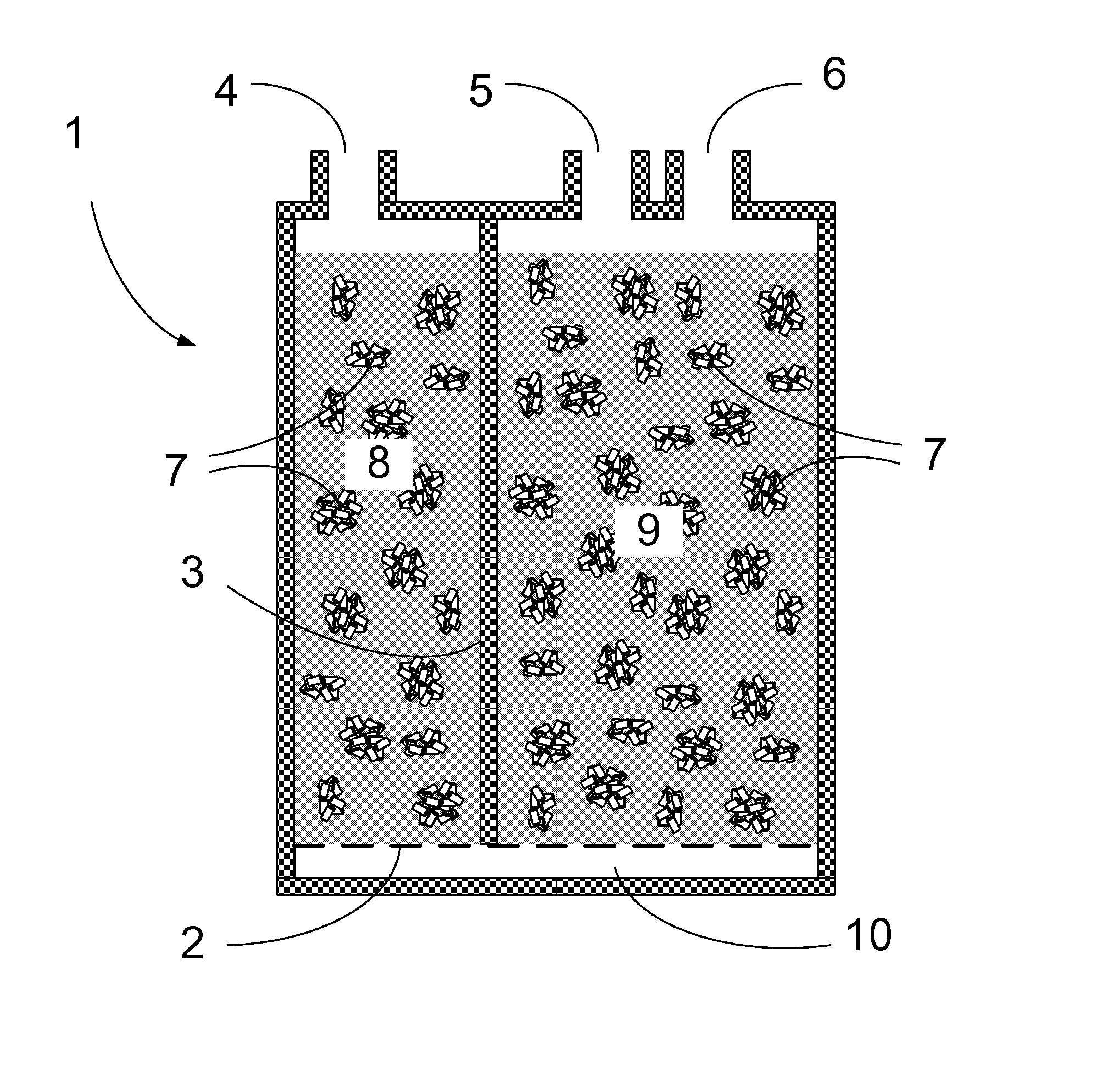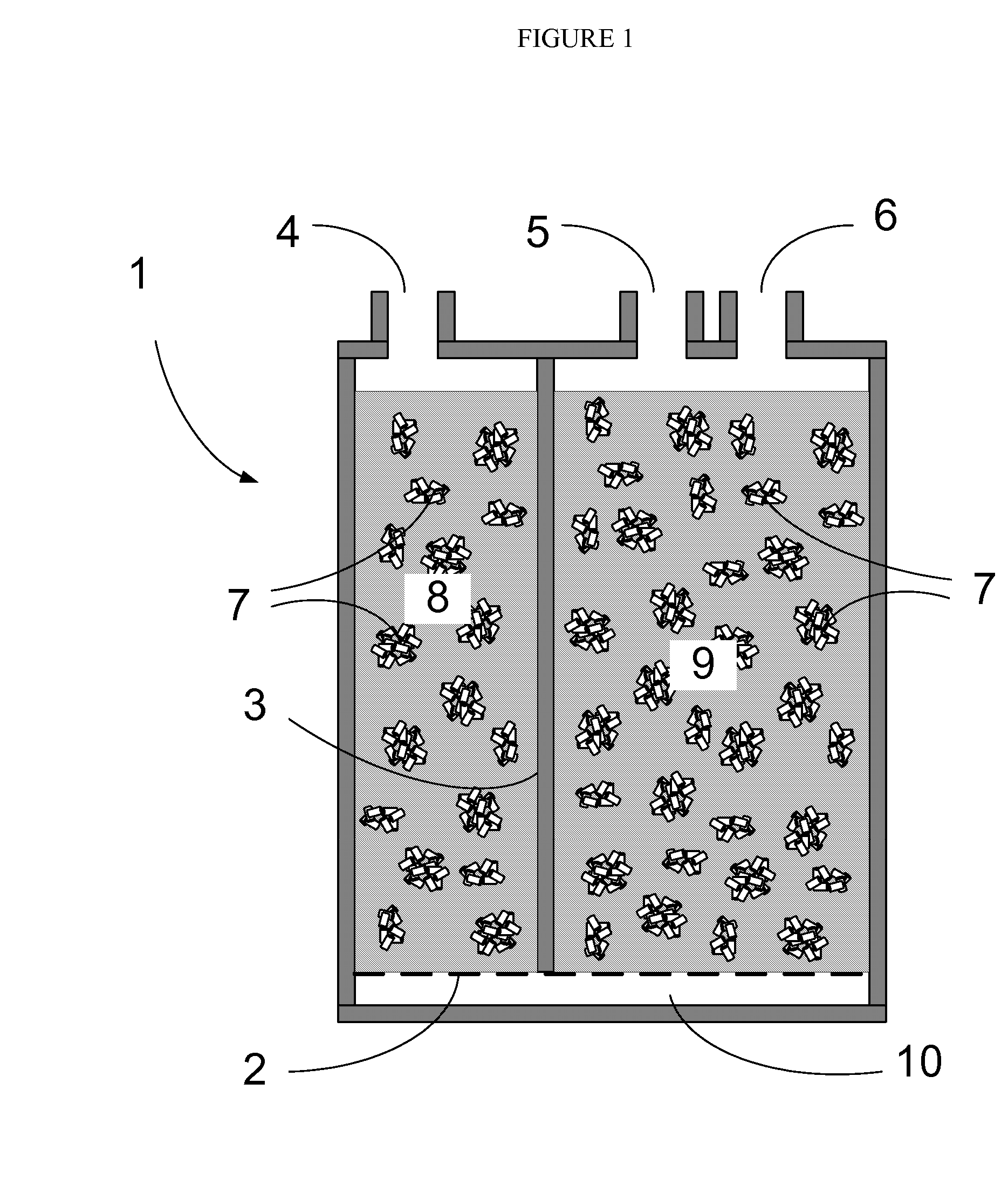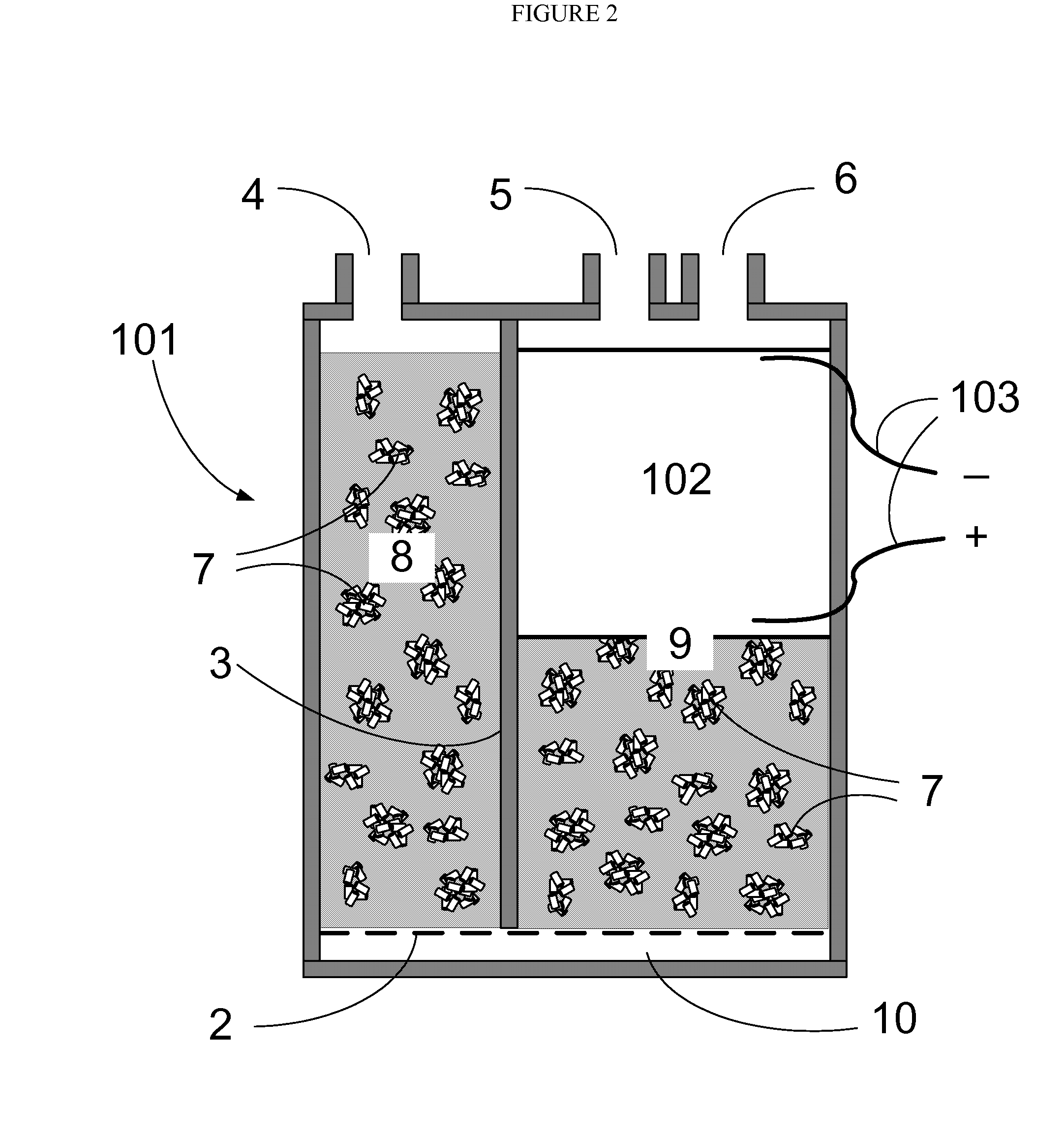Evaporative emission control using selective heating in an adsorbent canister
- Summary
- Abstract
- Description
- Claims
- Application Information
AI Technical Summary
Benefits of technology
Problems solved by technology
Method used
Image
Examples
example 1
[0046] A canister 201 was fabricated from Plexiglas® (FIGS. 12 and 13) and was equipped with screens 303 for retaining adsorbent, a purge outlet (adsorption step vapor source inlet) port 304 connected to three-way valve 209, a purge inlet (adsorption step exhaust outlet) port 305 connected to three-way valve 208, and activated carbon adsorbents in volumes 307-309 with a cumulative vapor flow path length of 17 cm and volume 310 with a vapor flow path length of 17 cm. The purge outlet section consisted of a 500 cc volume 307 filled by an activated carbon monolith module. Volume 307 encompassed the adsorbent flow path from 83% to 100% of the fractional distance from the purge inlet, or 75-100% of the fractional adsorbent volume from the purge inlet. Volumes 308 and 309 were each filled with 500 cc of 1.6 mm carbon pellets 311 made by phosphoric acid activation according to the method described in U.S. Pat. No. 5,324,703. Volume 308 encompassed the adsorbent flow path from 67% to 83% of...
example 2
[0049] The construction of canister 201 was the same as that described for Example 1, except that the volumes 307 and 309 each contained 500 cc of 1.6 mm activated carbon pellets 311. Volume 308 contained the activated carbon monolith module. The butane loading data after adsorption and after purge and the working capacity data for the Example 2 canister are provided in Table II.
example 3
[0050] The construction of canister 201 was the same as that described for Example 1, except that the volumes 307 and 308 each contained 500 cc of 1.6 mm activated carbon pellets 311. Volume 309 contained the activated carbon monolith module. The butane loading data after adsorption and after purge and the working capacity data for the Example 3 canister are provided in Table III.
TABLE IIIButane LoadingPurgeAfterAfterWorkingEffect of HeatHeatedVolumePurgeAdsorbPurgeCapacityat the SameVolumev / vHeatg / Lg / Lg / LPurge Volume309590106.772.234.4—3095935 W100.762.238.5+11.8%309125096.052.243.7—30912535 W89.842.547.2+8.0%309728080.024.655.4—30972835 W73.715.458.3+5.2%
PUM
 Login to View More
Login to View More Abstract
Description
Claims
Application Information
 Login to View More
Login to View More - R&D
- Intellectual Property
- Life Sciences
- Materials
- Tech Scout
- Unparalleled Data Quality
- Higher Quality Content
- 60% Fewer Hallucinations
Browse by: Latest US Patents, China's latest patents, Technical Efficacy Thesaurus, Application Domain, Technology Topic, Popular Technical Reports.
© 2025 PatSnap. All rights reserved.Legal|Privacy policy|Modern Slavery Act Transparency Statement|Sitemap|About US| Contact US: help@patsnap.com



